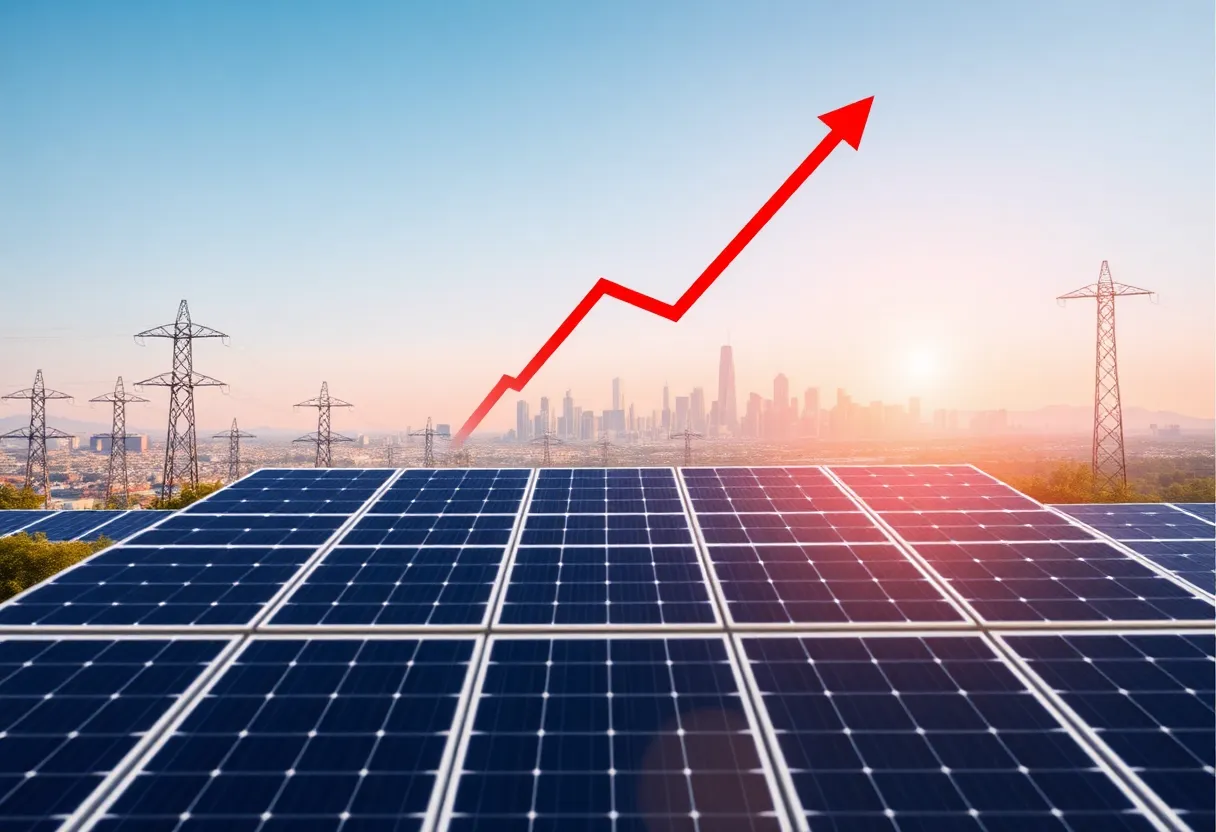

An artistic representation of the effect of tariffs on solar energy.
The U.S. Department of Commerce has announced significant tariffs on solar cells from four Southeast Asian countries, aiming to protect domestic manufacturers. The tariffs could reach as high as 3,521%, raising concerns within the solar industry about the impact on market dynamics. As the International Trade Commission reviews the situation, stakeholders express apprehension regarding the future of solar energy production in the U.S.
The renewable energy sector has recently been shaken up by the latest decision from the U.S. Department of Commerce, which announced _hefty tariffs_ on solar cells coming from four Southeast Asian countries: Cambodia, Malaysia, Thailand, and Vietnam. These tariffs could spike as high as an eye-popping _3,521%_, a move that has left many in the solar industry wondering how it will affect the market.
These tariffs are seen as a protective measure aimed at bolstering domestic manufacturers, particularly in light of concerns that foreign imports—especially those from Southeast Asia—are harming local production. The final decision regarding these tariffs won’t be set until the U.S. International Trade Commission (ITC) reviews the evidence and makes its determination, which is expected around _May 20_. If the ITC confirms that these imports are causing distress to U.S. manufacturers, the new tariffs will kick in.
Initial findings from the ITC have already suggested that solar imports from Southeast Asia are indeed hurting domestic manufacturing. While most of the preliminary tariff rates remain consistent, the rate for Cambodia has taken a significant leap from _729%_ to a staggering _3,400%_. This adjustment certainly raises eyebrows among stakeholders in the solar energy sector.
The push for these tariffs originated from the American Alliance for Solar Manufacturing Trade Committee, which filed an anti-dumping and countervailing duty (AD/CVD) petition in April 2024. This petition pointed out that Chinese solar manufacturers were using Southeast Asia as a workaround to dodge existing tariffs on their goods. The complexities of international trade regulations are evident in this case, as they weigh heavily on domestic producers.
As the ITC continues its investigations, they’ve held extensive public hearings which lasted _nine hours_. Various stakeholders, including domestic manufacturers and legal representatives, voiced their concerns during these sessions. Many highlighted that, despite incentives like those offered through the Inflation Reduction Act, the landscape for domestic production remains challenging. With references to past pricing conditions, manufacturers fear that the _current influx_ of Southeast Asian imports could recreate the competitive pressures previously felt from Chinese products back in 2011.
One major discussion point during the hearings was whether to classify silicon cells and final solar panels as “like products.” If these classifications were to be changed, it could allow solar panels to evade some tariffs. However, undertaking such a change isn’t easy, as the ITC has historically treated cells and panels the same. For now, the tariffs announced still apply consistently to both categories, which keeps things straightforward, albeit troubling for some.
The decision from the Commerce Department has sparked a lot of conversation about what the future holds for the solar industry in the U.S. If the ITC decides to treat cells and panels differently, new tariff amounts could emerge, leading to further adjustments in pricing and market dynamics.
As the final determinations draw nearer, one thing is clear: the stakes are high, and the implications of these tariffs could ripple through the renewable energy sector for quite some time. Many are left to wonder how these developments will shape the future of solar energy production in the United States.
News Summary AISIN Corp. has announced significant leadership changes in Plymouth Township with the establishment…
News Summary Detroit's Bookstock, the annual used book and media sale, returns from April 27…
News Summary Residents of Novi and Wixom are in for significant improvements along 12 Mile…
News Summary A man, John Talerico, faces federal charges after robbing a jewelry store in…
News Summary Fortune Media IP Limited has announced significant changes to their digital advertising compensation…
News Summary In a nail-biting baseball match on April 27, 2025, the Michigan State Spartans…